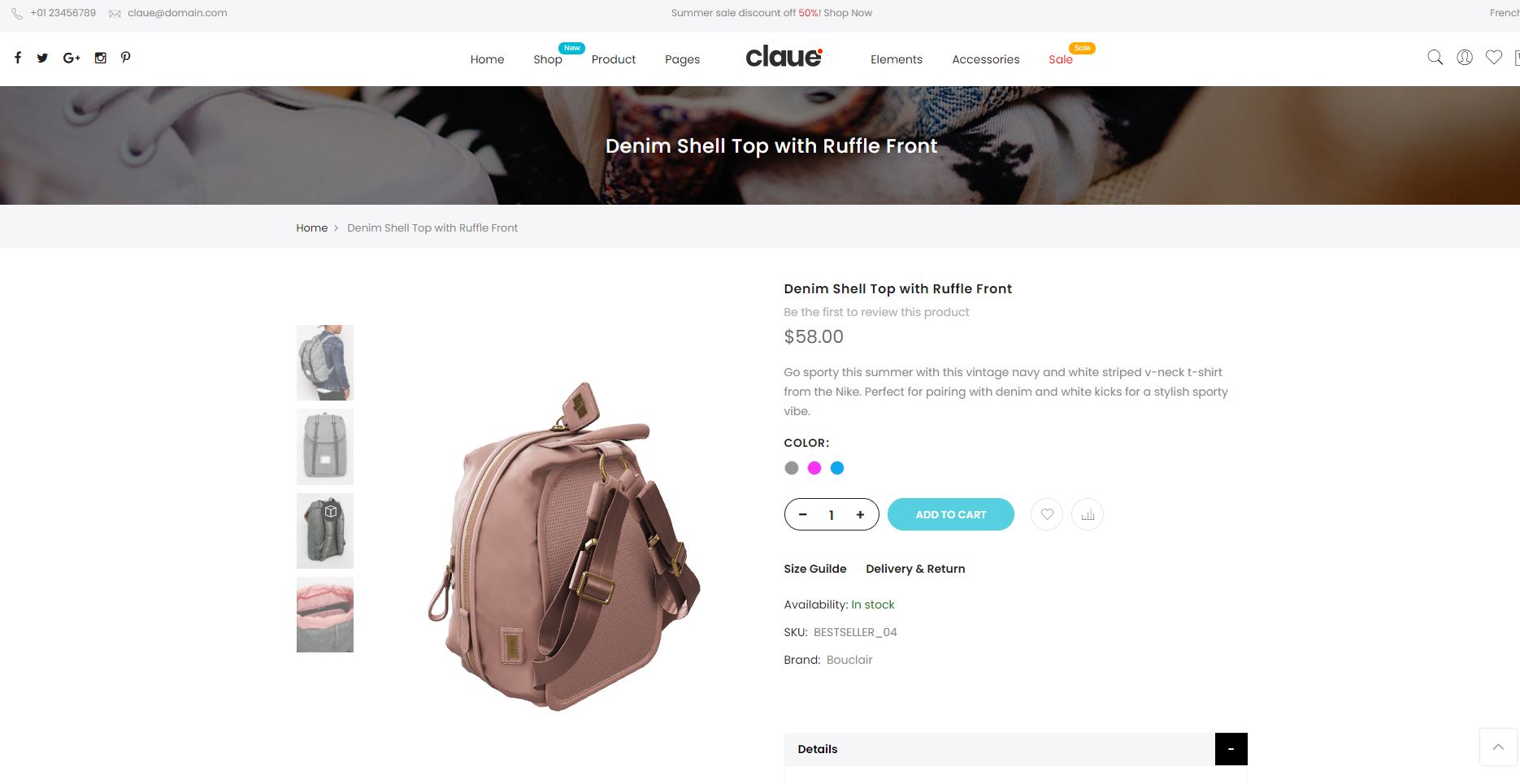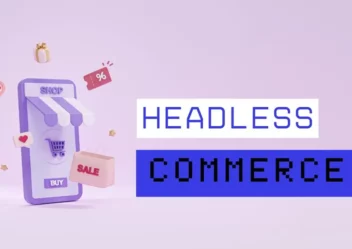How to Build an Ecommerce Website? Essential Pages & Tips
Building a good Ecommerce website is crucial for turning website visitors into buyers. No matter how quality your online advertisements are, you could be losing potential customers if your ecommerce store is not optimized for sales. Follow the blog and you should start seeing more conversions in no time!
Claue – Clean and Minimal Magento Theme
We provide an amazing Magento theme with fast and responsive designs. Let’s find out!
How to Choose a Platform to Build an Ecommerce Website?
The platform you choose for an ecommerce website will shape your store’s performance, flexibility, and long-term scalability. There are three main types of popular platforms on the market for building an ecommerce store, including Open Source, SaaS (Software as a Service), and Headless Commerce. Each of them equips you with a toolkit for building an ecommerce store, such as page builder, checkout page, payment gateway integrations, and more. However, the difference between those platforms lies in the levels of control and customization they allow.
SaaS Platforms: Quick Setup, Limited Flexibility
SaaS platforms like Shopify or Squarespace support an out-of-the-box ecommerce experience. Think of them as “plug-and-play” solutions. You can design your storefront using intuitive drag-and-drop builders within hours. These platforms are the best solution for beginners or small businesses because of their simplicity and reliability. However, their closed architecture restricts custom coding and complex features. You can’t build your stores with specialized functionality.
SaaS solutions operate on a multi-tenant architecture, meaning all users share the same codebase. It increases efficiency and maintenance but limits your ability to modify deep logic or add proprietary features.
Open Source Platforms: Maximum Control, Higher Complexity
Open source platforms are like a blank canvas. With enough time and effort, your store can be turned into any sort of ecommerce website. But you are creating everything from scratch. It also means you’ll likely need a developer (or a development team). Open source is suited for businesses with specific performance requirements, high-volume catalogs, or tailored checkout flows.
Open source platforms offer a monolithic architecture. The front-end and back-end are tightly coupled. It also requires maintenance and demands higher server-side expertise.
Headless Commerce: Decoupled Flexibility and Future-Proofing
Headless commerce separates the front end (what customers see) from the back end (commerce logic and data). You can use modern front-end frameworks like React or Vue.js, still connecting to powerful back-ends like BigCommerce, Shopify Plus, or even custom APIs. Headless commerce conveys a highly performant and customizable experience to any device or interface, web, mobile app, smart display, and beyond.
Headless architecture aligns with API-first and microservices-based architecture. It has scalability, integration with third-party services, and flexibility in deploying updates independently across components.
Essential Website Pages Your Business Should Have
When thinking about creating a website, there are lots of factors you need to consider. One of the most popular questions from small business owners is “What web pages should I have on my website?”. Let’s tackle this question.
1. Homepage
Your homepage is the very first handshake between your brand and potential customers. So, it is an opportunity to make an immediate impression. According to Google, users form a visual judgment of a website in just 50 milliseconds (that’s 0.05 seconds). In that blink of an eye, your homepage must communicate who you are, what you offer, and why a visitor should care.
Considered from a psychological standpoint, the homepage works best when it combines clarity, hierarchy, and emotional appeal. It should be visually attractive and gently nudge the visitor deeper into the site.
A well-structured ecommerce homepage typically includes:
- An intuitive navigation menu. The best place is at the top.
- A hero image or carousel banner that visually communicates your brand’s main offer, seasonal campaign, or best-selling product. This section should include a clear call to action (CTA) like “Shop Now” or “Discover Our New Arrivals.”
- Featured sections, such as “Best Sellers,” “New In,” or “Top Picks,”. According to a study by Salesforce, personalized product recommendations can drive up to 26% of ecommerce revenue.
- Pop-ups or announcement bars welcome discounts, free shipping, or newsletter signups can capture leads and improve retention. Remember to make sure they’re timed well and not disruptive.
- Search functionality should be top-right, with autocomplete or predictive suggestions. They improve navigation and reduce bounce rates.
- Trust signals like logos of partner brands, customer reviews, or a brief “Why Choose Us” section. These elements build credibility and keep first-time visitors engaged longer.
It’s also worth noting that the look and feel of your homepage should align with your industry and audience. For instance, fashion retailers often lead with bold, emotion-driven photography. Electronics sites may highlight technical specs or new releases.

2. Category Page
According to a Microsoft study, attention spans average just 8 seconds in the digital environment. So, a well-designed category page acts like a curated aisle in a physical store. People quickly find what they’re looking for, even if they’re not sure exactly what that is.
Category pages need to strike the right balance between browsability and clarity. At a glance, users should be able to scan the products, understand what the page is about, and apply filters or sorting options based on their preferences, like price, size, color, popularity, or availability. The faster they can locate what interests them, the more likely they are to convert.
But beyond usability, category pages promote SEO performance. Each one should be a landing page that Google can easily crawl and rank. That means:
- Using descriptive, keyword-optimized URLs (e.g., /womens-shoes instead of /category-123)
- Writing unique category descriptions that introduce the page and incorporate relevant search terms naturally
- The category fits into a logical hierarchy within your site structure (no duplicate categories, no orphan pages)
- Dynamic filtering options without creating unnecessary duplicate content through parameterized URLs
Poor category structure can confuse both users and search engines. For example, improper parent-child relationships can result in duplicate content issues. Multiple URLs leading to the same product listings can undermine your site’s ranking in search results.

3. Product Page
The product page is arguably the most important part of any ecommerce website. According to the Baymard Institute, 87% of shoppers consider product content to be indispensable when making a purchasing decision. Your product page is the best chance to convince, reassure, and convert.
Every product page should include a few irreplaceable elements. High-quality images for shoppers to visually inspect the product. Your images should be taken from multiple angles, with zoom capability. Add to that a clear list of specifications: product name, color options, size variations, pricing, and availability.
The “Add to Cart” and “Buy Now” buttons should be prominently displayed, easy to tap on mobile. Consider including a “Save for Later” option too, especially for more expensive or comparison-driven products.
A description list helps the customer visualize how this item fits into their life. You should add verified customer reviews, ratings, and user-generated photos.
4. Checkout Page
Checkout is one of the riskiest points in the customer journey. According to the Baymard Institute, the average cart abandonment rate is nearly 70%. 18% of users abandon their cart due to a long or complicated checkout process. You should optimize this page if you want to improve conversions.
One smart move is to offer guest checkout for first-time users. People appreciate not being forced to create an account up front. There are some cases, they are just testing the waters. You can always prompt them to sign up for an account after checkout with a gentle nudge like “Save your details for next time?”
Next, take a hard look at your form fields. The average ecommerce checkout has 12.9 form fields, yet studies show that 6 to 7 fields are usually enough to collect all the data you need. Reducing unnecessary fields speeds up the buying process.
5. About Us Page
According to a report by KoMarketing, 53% of B2B buyers say the About Us page is one of the first things they check when landing on a vendor’s site. Even if you don’t run a B2B manufacturing shop, this page is still pivotal to trust-building, especially for first-time visitors.
Telling a story to build the About Us page. Why did your business start? What problem are you solving for your customers? Stories make brands memorable far more than any mission statement or product list.
5 Tips For Building High-Performance Websites
Let’s look at 5 essential tips to help you build high-performance websites that are fast, reliable, and deliver a great user experience.
1. A Great User Experience Should Always Come First
An ecommerce site may have the best prices on the Internet, but if the user struggles to navigate it, feels frustrated during checkout, or can’t find the product details they need, they’re likely to bounce. Online users are less likely to return to a website after a bad experience.
When designing or auditing your site, put yourself in the shoes of your customers. Imagine you’re a first-time visitor: What would you expect to see first? Can you easily find the product categories? Is the product page informative and persuasive? Is checkout fast and painless, or filled with hurdles? The best ecommerce stores solve problems before the customer even realizes they have one.
2. Make Branding a Priority
Think of branding as your store’s DNA. It shows why someone should choose you over the thousands of other shops selling similar products.
Logo and color palette are the main branding factors. Don’t forget the overall vibe of your site. Is your brand youthful and playful? Minimalist and elegant? Bold and adventurous? Whatever your identity, draw it across your homepage, product pages, email marketing, and customer service interactions.
3. Make Your Content Easy to Scan
Most visitors to your ecommerce site won’t read every word. Users typically read only 20% of the text on a webpage. Instead of carefully consuming each line, they scan for key takeaways.
In addition to providing information, the product description, “About Us” story or blog post also needs to make that information as digestible as possible.
An easy way is to break your content into bite-sized sections. Keep paragraphs short, two to four lines. Use clear subheadings that guide readers through the content. Apply bold text selectively to highlight important information like product benefits, shipping details, or sizing tips. You should combine bulleted, numbered lists and white space.
4. Cultivating Consumerism Engages E-commerce
Urging shoppers to “Buy Now”, outstanding CTAs are no longer relevant. Because people don’t like to feel sold to, they do love the feeling of making a smart or satisfying decision.
According to Harvard research, 95% of purchasing decisions are subconscious. Customers are driven by emotion rather than logic. So when your landing page or product layout creates emotional resonance, you’re far more likely to convert without ever needing to bold “limited offer”.
5. Show, Don’t Tell
Tooltips, help text, and pop-ups have their own meaning. They provide quick guidance to reduce hesitation in key moments. But here’s the thing: if you constantly need to explain how your website works, there’s a problem with your design. A strong UX eliminates the need for instruction. Shoppers shouldn’t have to read a manual just to find the “Add to Cart” button or figure out how to apply a discount code.
Amazing Examples for Building Ecommerce Website
Let’s check out each of these Ecommerce website examples, one by one.
1. Claue
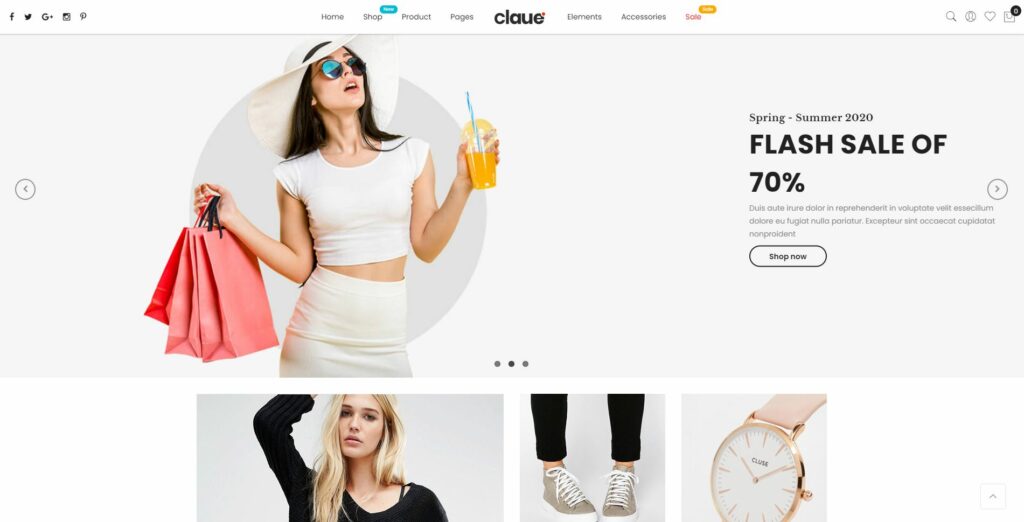
Link: Claude
Business Category: Electronics, Fashion, Jewelry, Furniture,..etc.
Claue was one of the best-selling Magento 2.4.1 themes in 2020, with over 4,500 satisfied customers. When integrated with your store, Claue ensures super-fast loading speeds, helps boost your products to the top of Google search results, and optimizes mobile conversions.
2. Lusion

Link: Lusion
Business Category: Fashion, furniture, decoration, Jewelry, food, accessories, wine, watch
Lusion is evaluated as the most unique multi-purpose eCommerce theme for shopping online with clean and modern design. It is one of the best Premium Shopify Themes designed and developed by ArrowTheme. With an elegant and focused design on the products, Lusion will make your online store look more impressive and attractive to shoppers.
3. GemMart
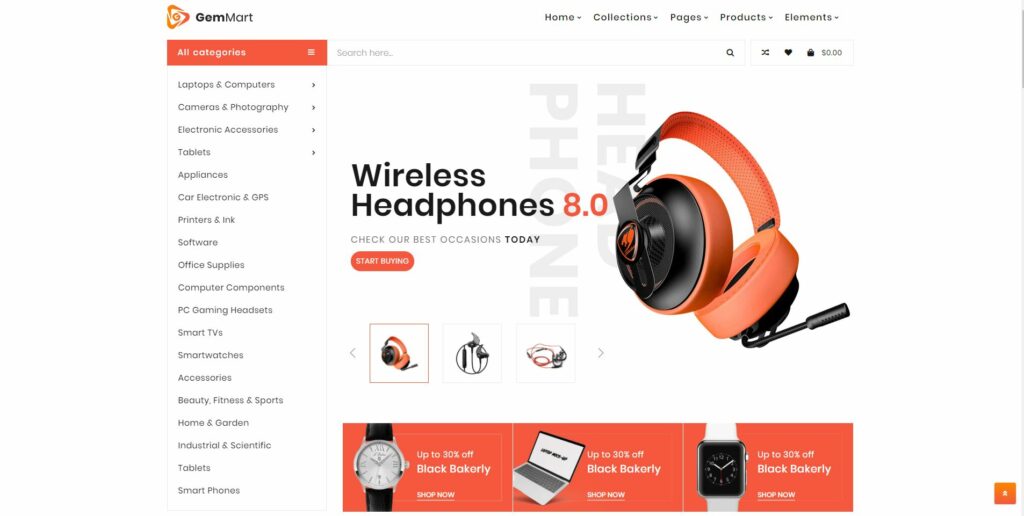
Link: GemMart
Business Category: Multi-vendor marketplace, electronics stores, mobile phones, tablet, digital cameras accessories, and gadgets..etc
Gemmart is a Marketplace Multipurpose Magento 2 Theme which is specially designed for the multi-vendor marketplace, electronics stores, mobile phones, tablets, digital cameras accessories, etc. This theme is the perfect choice for people who want to build a website like Amazon, Lazada, or eBay with a unique design.
4. Molla
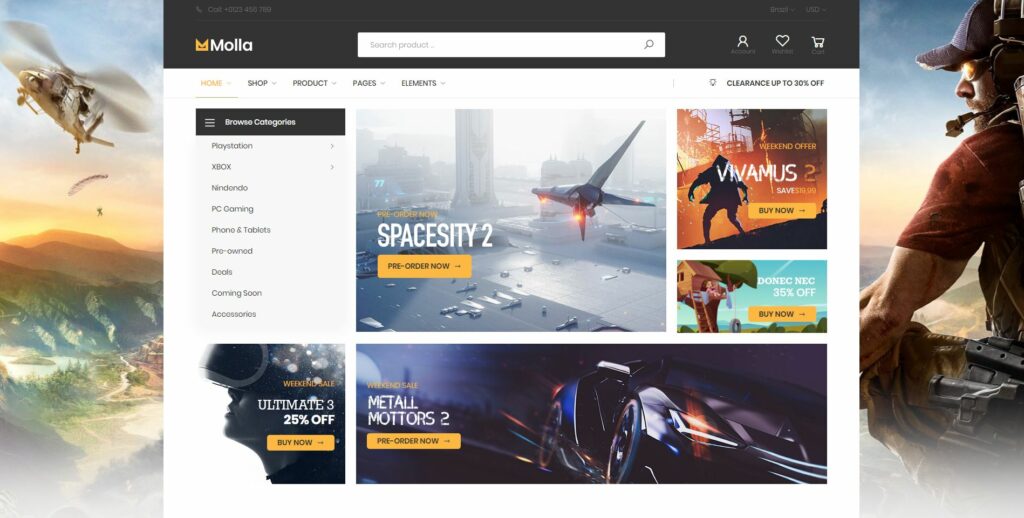
Link: Molla
Business Category: Electronics, Sport, Game store, Fashion, Shoes, Book..etc
With a whopping collection of 24 + Pre-made demos, this sophisticated Magento theme 2.4.1 is for everyone. Molla – Multipurpose Magento 2 Theme offers a great shopping experience for customers with blazing fast performance.
5. Lusion
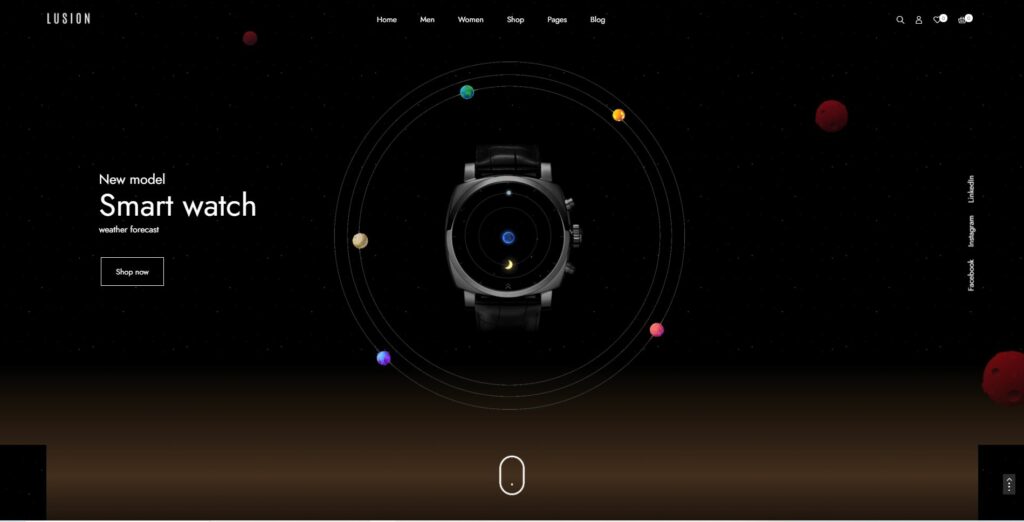
Link: Lusion
Business Category: Fashion, furniture, decoration, Jewelry, food, accessories, wine, watch
Lusion is a Multipurpose eCommerce WordPress Theme that will be a subtle and smart choice for shop owner to sell their best products. There is no doubt that Lusion will make your work look more impressive and attractive to viewers. Lusion theme is Retina-ready and fits within multiple devices, browsers, and platforms. Built-in Elementor allows you to customize any sections of the page instantly, right at the front-end.
Conclusion
How to build an ecommerce website? There’s a lot to consider when releasing an ecommerce website. Hope this blog can help you know what the essential elements should be taken care of.
Besides, if you want to maximize the success of your ecommerce store, consider working with an experienced ecommerce marketing company like ArrowTheme. We offer expert Ecommerce website design and digital marketing services that support you in developing your online business!
Contact US – ArrowTheme:
– Email: [email protected]
– Facebook: Facebook.com/ArrowThemeTeam
– Website: ArrowTheme.com
Read more: Magento 2 B2B vs B2C Ecommerce: Which Fits Your Business?

